 General
General  General Archive
General Archive  Top Cleveland Sports Figures, By the Numbers - #17
Top Cleveland Sports Figures, By the Numbers - #17
This is one installment in a team effort by The Cleveland Fan, highlighting the top local sports figures by jersey number. Please weigh in with your thoughts on the Boards. And as David Letterman would say, “For entertainment purposes only; please, no wagering.”
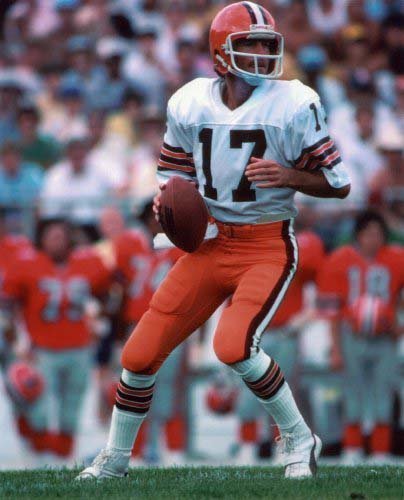 In our competition for best ever to wear #17 in Cleveland, Browns quarterback Brian Sipe was behind late in the game, but he rallied in the final few minutes to win it.
In our competition for best ever to wear #17 in Cleveland, Browns quarterback Brian Sipe was behind late in the game, but he rallied in the final few minutes to win it.
Well, that’s not really how it came down. In fact, Sipe was a fairly easy choice at #17, blowing by the likes of Anderson Varejao, Travis Fryman, Tony Pena and Chris Gardocki like they were standing still. But coming from behind to win was Sipe’s calling card, and it turned him from a draft afterthought into an NFL MVP and a local hero, when he became the face of the Kardiac Kids in 1979 and 1980 for the Browns.
Sipe’s legacy in Cleveland is bittersweet, however. The author of so many thrilling come-from-behind victories was also the author of the ill-fated pass that brought down the curtain on the dream of 1980 for the Browns. That pass has come to be known to generations of Browns fans by the name of Sam Rutigliano’s play call...“Red-Right-88”, and it takes a backseat to no other gut-wrenching disappointment in the long tradition of gut-wrenching disappointments for this town’s sports fans. But we’ll get to that...
Surfing the North Coast
The Browns selected Brian Sipe in the 13th round of the 1972 draft, but the kid from San Diego State never thought he’d play pro football. He was a native of southern California...a surfer who looked the part, but it was boards of a different sort he figured to be using after his training camp tryout in Cleveland. Sipe had already made plans to move to Colorado to join some friends, and work as a waiter to support a skiing habit...(because that’s what 22-year-olds did in the early 70’s)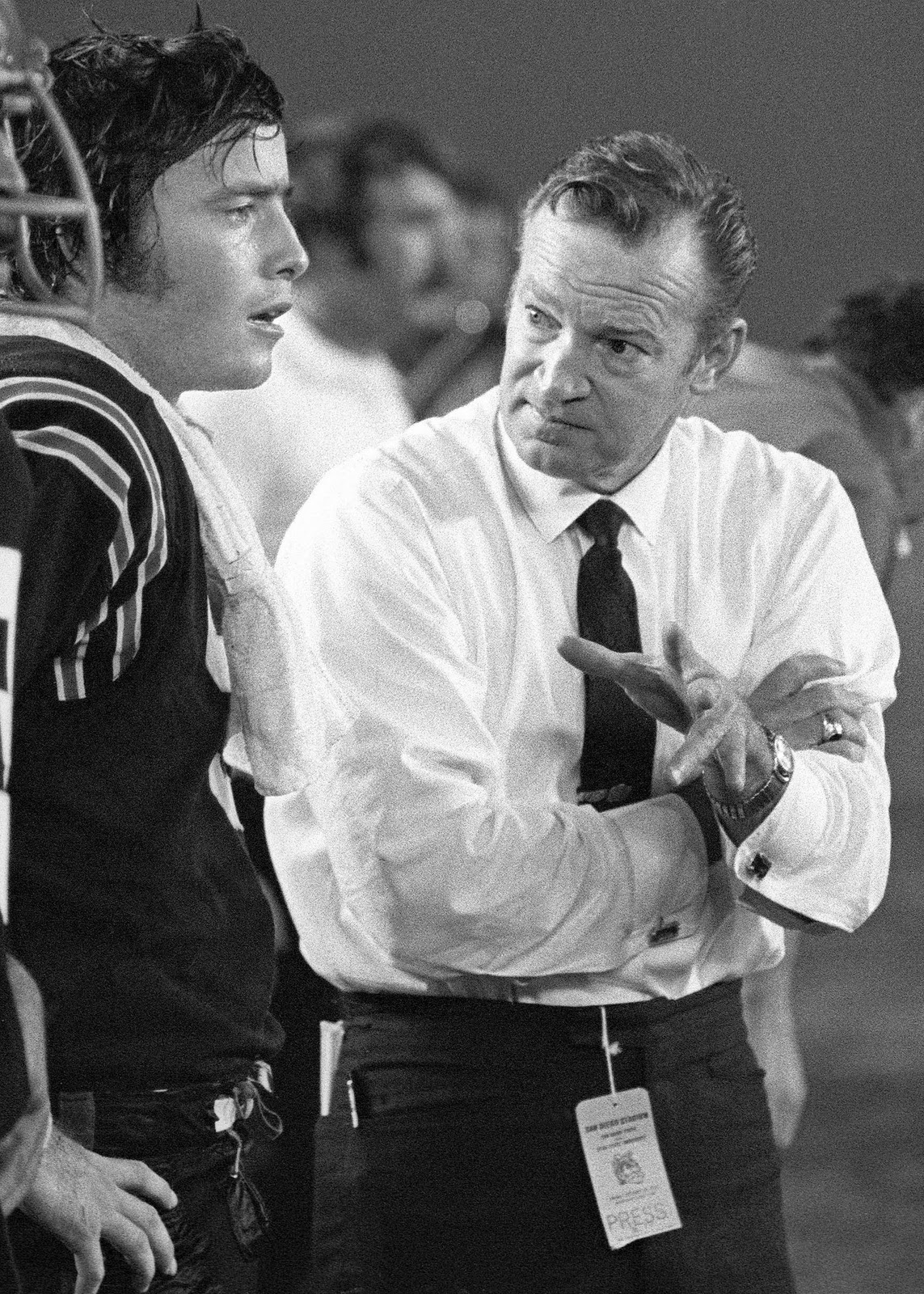 Instead he ended up on the Browns “taxi squad”, an inactive player for his first two full NFL seasons, the guy on the sidelines with the clipboard and the ball cap. It’s not as though his college career had been unimpressive. Sipe started for the Aztecs for three years (1969-71) and passed for 5,707 yards and 44 touchdowns. He was named Honorable Mention All-American by UPI in 1970 when he led SDSU to a 9-2 record while throwing for 2,618 yards and 23 TD’s. The Aztecs spent eight weeks ranked in the Top 20 that year, and then as a senior, Sipe was recognized by both AP and UPI as Honorable Mention All-American.
Instead he ended up on the Browns “taxi squad”, an inactive player for his first two full NFL seasons, the guy on the sidelines with the clipboard and the ball cap. It’s not as though his college career had been unimpressive. Sipe started for the Aztecs for three years (1969-71) and passed for 5,707 yards and 44 touchdowns. He was named Honorable Mention All-American by UPI in 1970 when he led SDSU to a 9-2 record while throwing for 2,618 yards and 23 TD’s. The Aztecs spent eight weeks ranked in the Top 20 that year, and then as a senior, Sipe was recognized by both AP and UPI as Honorable Mention All-American.
Sipe learned passing offense from some of the greats of the era. His head coach at SDSU was a guy named Coryell, a passing game guru now such a household word that a young fan might be excused for thinking his first name was “Air”. Sipe’s position coach was Rod Dowhower, who would also go on to a career as a coordinator and a head coach in the NFL.
He lasted until the 13th round because he was even shorter than his listed height of 6’,1”, and even lighter than his listed weight of 185 lbs. He didn’t have a terribly strong arm either. Plain Dealer writer Chuck Heaton predicted he’d never make it out of camp with the team. Somehow he stuck. The slopes of Colorado would have to wait.
Phipps Fades, Sipe Surfaces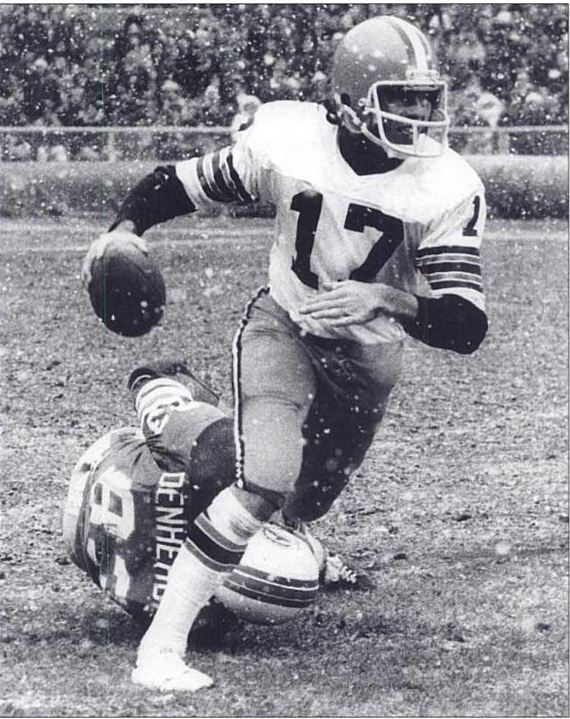
1974 ended 4-10, and 1975 started out on the same course, as Forrest Gregg replaced Nick Skorich as head coach. The Browns lost their first nine games, with Sipe getting a handful of starts alternating with Phipps. Both quarterbacks played in several of the games, as Gregg searched for some kind of winning formula. How desperate was he? A quarterback out of Texas A&M named Will Cureton started and played the whole game for the Browns against the Lions that year, the eighth loss in that streak of nine. Cureton never played a down of NFL football before or after that day. After that miserable ‘75 campaign, Modell brought in an acquaintance from the NFL office in New York to be his new general manager.
---
“My first week with the Browns (1976) I met with all the coaches and I said ‘Is there anybody on this team who thinks Brian Sipe can take us to the Super Bowl?’ No coach was opposed to us trying to move Brian if we could get anything for him.” - Pete Hadhazy, Browns General Manager
---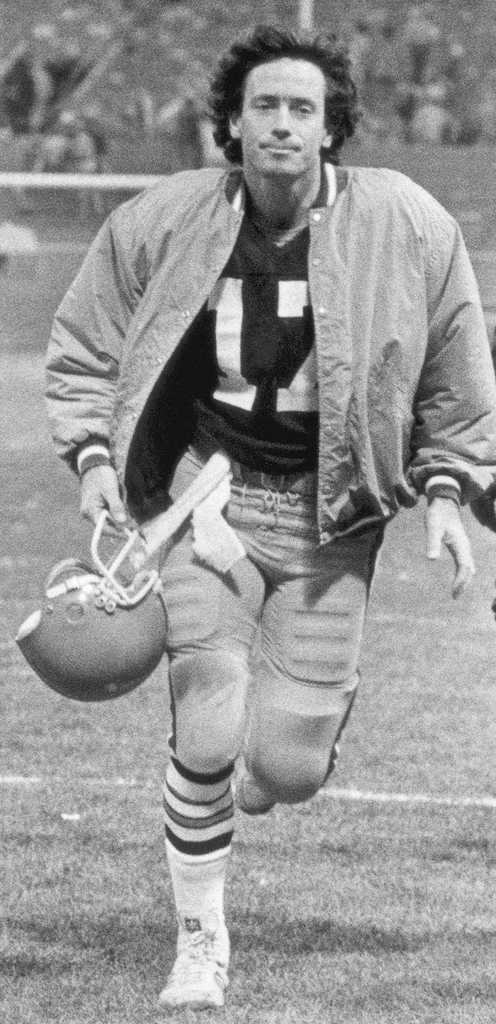 No word on whether the coaches then asked if anybody thought Pete Hadhazy was a competent general manager...but regardless, Brian Sipe would finally get over the hump as a winning NFL starter after Phipps was injured in the 1976 opener. Sipe guided the Browns to a 9-5 record (57.1% passing, 2,113 yds, 17 TD, 14 INT), and was entrenched as the starter from that point on. At one point Sipe had a streak of 70 consecutive regular season starts, tying him for 21st all time among NFL quarterbacks.
No word on whether the coaches then asked if anybody thought Pete Hadhazy was a competent general manager...but regardless, Brian Sipe would finally get over the hump as a winning NFL starter after Phipps was injured in the 1976 opener. Sipe guided the Browns to a 9-5 record (57.1% passing, 2,113 yds, 17 TD, 14 INT), and was entrenched as the starter from that point on. At one point Sipe had a streak of 70 consecutive regular season starts, tying him for 21st all time among NFL quarterbacks.
In 1977 the Browns were 5-3 under Sipe one week into November, but he suffered a shoulder injury in a loss (the streak lives!) at Three Rivers Stadium, and the Browns staggered to a 6-8 finish. It was in 1978, under new head man Sam Rutigliano, that Sipe began to flourish in an offense designed to take advantage of his passing prowess.
In a fit of temporary insanity after the ‘77 season, the Chicago Bears offered a 1st round draft choice to the Browns for their backup quarterback Phipps, and Cleveland jumped at it. That pick resulted in the selection of Ozzie Newsome in the ‘78 draft, and Rutigliano had found the elite receiver to pair with Sipe for the future.
---
“When Brian Sipe played, 10 guys on offense and everybody on defense felt we could win” - Sam Rutigliano
“He had that charisma. He made people believe that when he did something, it was going to work. He was unbelievable that way.” - Doug Dieken
---
The Comeback Thing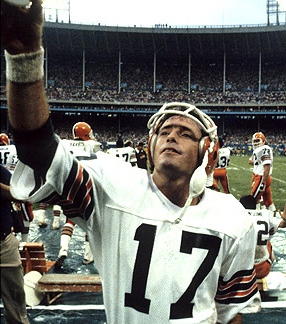 The label “Kardiac Kids” wouldn’t be applied to this team until midseason, but the ‘79 Browns started out in thrilling style, with heart-stopping wins in their first three games, an overtime win over the Jets, a last-minute victory over Kansas City, and a win over Baltimore on a field goal in the last two minutes. That set the stage for a matchup between the 3-0 Browns and the 3-0 Cowboys on Monday Night Football at Municipal Stadium. (YouTube videos here and here)
The label “Kardiac Kids” wouldn’t be applied to this team until midseason, but the ‘79 Browns started out in thrilling style, with heart-stopping wins in their first three games, an overtime win over the Jets, a last-minute victory over Kansas City, and a win over Baltimore on a field goal in the last two minutes. That set the stage for a matchup between the 3-0 Browns and the 3-0 Cowboys on Monday Night Football at Municipal Stadium. (YouTube videos here and here)
Sipe threw first quarter TD passes to Newsome and Dave Logan, and Thom Darden returned an interception for a score, all before Dandy Don, Howard and Giff could get their seats warm. The Browns defense stymied Roger Staubach all night in a huge 26-7 win for the Brown and Orange. The team staggered a bit after the fast start, falling to 4-3, but then won three straight to set up a stretch run in which the last seven games of the season were all decided on the last possession.
With a playoff spot on the line in the final game of the season in Cincinnati, Sipe’s pass into the end zone on the game’s last play went off the fingertips of receiver Reggie Rucker, and with it went the Browns playoff hopes. They finished 9-7, playing three overtime games. In all, 12 of their 16 games were decided after the two-minute warning. And they were just getting warmed up.
1980
The Browns started out 0-2 in Sipe’s MVP season of 1980, with losses at New England and at home to Houston, but then they reeled off 11 wins in their last 14 games. The only losses were by three points each against Denver, and at Pittsburgh (natch), and then the 5-point loss to Minnesota in the 15th game, on the last-second Hail Mary to Ahmad Rashad. (see 4:20 mark here) And some of the victories engineered by Sipe were simply otherworldly. To wit: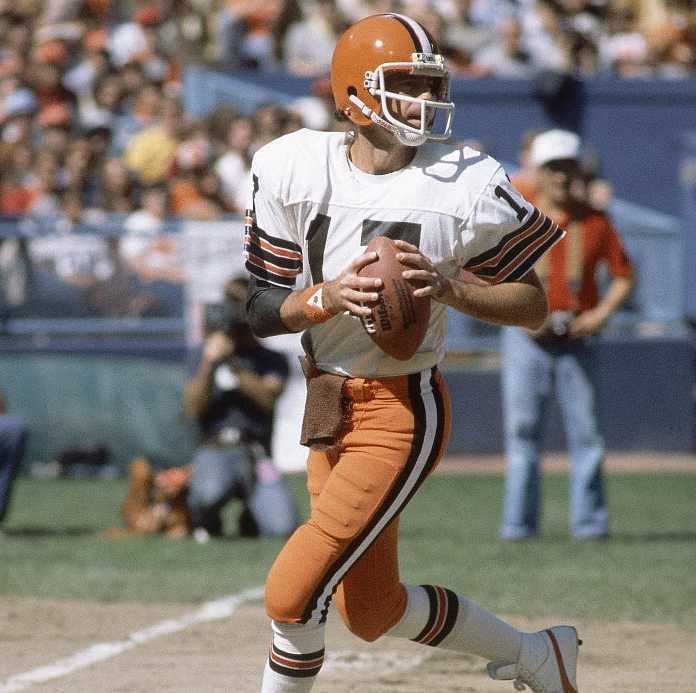 The Browns were down two scores to the Packers in the 4th quarter in Week 7 - Sipe hits Newsome for a TD, but with 16 seconds remaining the Browns are still down a point with the ball just inside midfield. Sipe lofts a pass to Dave Logan streaking down the right side. Logan cuts inside the defender, snags it, and goes in for the 46-yard score and the win.
The Browns were down two scores to the Packers in the 4th quarter in Week 7 - Sipe hits Newsome for a TD, but with 16 seconds remaining the Browns are still down a point with the ball just inside midfield. Sipe lofts a pass to Dave Logan streaking down the right side. Logan cuts inside the defender, snags it, and goes in for the 46-yard score and the win.
One week later, the Browns trail the Steelers by 12 in the 4th, but Sipe throws two TD’s in the final minutes to pull out a 27-26 thriller over the hated rivals from the east. Another week later, on Monday Night Football against the Bears, a late 56-yard Mike Pruitt TD run ices the game for the good guys. Three point wins over the Oilers and the Jets, and a one-point victory over Baltimore would follow.
After the Rashad nightmare though, the Browns still had to beat Cincinnati in the regular season finale to make the playoffs. Don Cockroft came through with a field goal with less than two minutes remaining to wrap it up, and the Browns were 11-5 and in the postseason with a first round bye.
Of the Browns 16 regular season games in 1980, 13 were decided after the two-minute warning, and nine of their eleven wins were by less than a touchdown. That’s Kardiac.
Sipe finished the year with 4,132 yards (behind only Dan Fouts), on 61% passing, 30 TD’s, 14 INT, and a 91.4 QB rating. He led the NFL for lowest interception percentage, and oh, yes...he is the last Cleveland Browns player to win the NFL Most Valuable Player Award.
It’s late December 1980, and Brian Sipe is the toast of the town.
Kardiac Kids highlight videos here and here.
RR88
January 4, 1981 - AFC Playoff Game vs Oakland Raiders
1 degree on the lakefront. Wind chill factor -36 degrees.
You know the story. I won’t belabor it other than to point out that, even late in the 4th quarter, the game was playing exactly to type for this team. They were down two points, with the ball, on their own 14-yard line, with less than two minutes left on the clock. I’ll let the great John Facenda narrate the rest.
alt=""
A few afterthoughts and reminders about how this game went for Brian Sipe and the Browns, several of which I didn’t remember myself until reading various accounts of the day for this series. 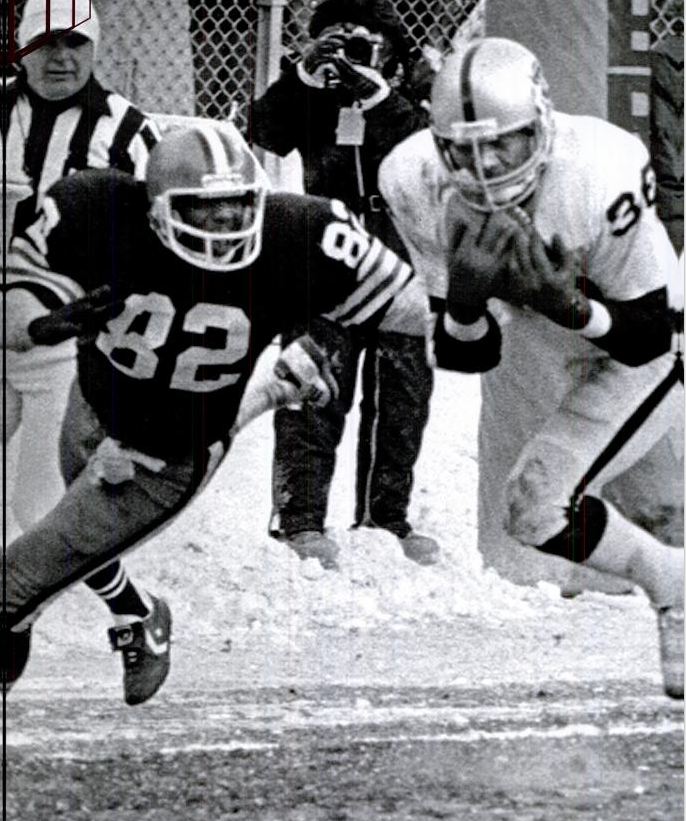
Don Cockroft missed field goal attempts of 47 and then 27 yards in the first half, and then missed the extra point on the Browns first TD, an interception return by Ron Bolton. Cockroft connected twice from 30 yards out in the second half, but holder Paul McDonald fumbled the snap on another attempt, and yet people still wonder why Rutigliano didn’t necessarily think the field goal was a lead pipe cinch in the freezing cold, windy Stadium at the end.
You’ll recall that the Davis interception was in the left corner of the end zone...on a play called Red Right 88. That’s because the intended receiver on the play was Dave Logan, on a crossing pattern to the right side. Sipe said he was telling himself “Don’t get sacked. Don’t get sacked,” as he stepped up under center. At the snap, he was focused on the two Raider linebackers blitzing him, and somehow he missed seeing Logan’s defender get bumped by his own teammate, and never saw Logan breaking wide open on the right side.
And so it goes.
---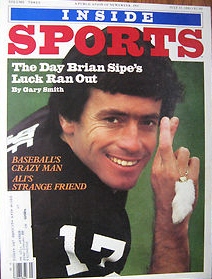
---
The first thing Sam Rutigliano did when Sipe came to the sidelines after the crushing interception was to hug him, and say “I love you, Brian”. And from all appearances, the fans of Cleveland never stopped loving Brian Sipe. He remains one of the most popular Browns players of all time, even though things were never quite as exciting after that bitter cold afternoon in January of ‘81.
The Browns were 7-15 in Sipe’s starts over the next two seasons, and in the strike-shortened season of 1982, he was benched in favor of Paul McDonald. He took the starting job back in ‘83, and threw for 26 touchdowns in an 8-6 season, but management was not happy with him for negotiating with Donald Trump and the New Jersey Generals of the USFL while the NFL season was ongoing. He eventually signed with the Generals, and played two seasons in the USFL before retiring after the 1985 season.
Today Brian Sipe resides in San Diego, California, where he and his wife Jeri have raised three children, and he has had a successful career as an architect. He is also now in his second year as the quarterbacks coach at San Diego State University.
--- Brian Sipe was a different breed of cat as a professional football player. He always had the bearing of the laid-back southern Californian...the surfer dude with the boyish good looks that exuded a kind of 70’s “cool”. The women swooned. But Sipe was also a serious, reflective guy. And the team doctors and trainers always said he was one of the toughest players they had ever been around.
Brian Sipe was a different breed of cat as a professional football player. He always had the bearing of the laid-back southern Californian...the surfer dude with the boyish good looks that exuded a kind of 70’s “cool”. The women swooned. But Sipe was also a serious, reflective guy. And the team doctors and trainers always said he was one of the toughest players they had ever been around.
At about the same time that he was winning games for the Browns, another local star was rising over in the Indians clubhouse. And it’s a reminder of how we get our sports celebrities in all different kinds of packaging.
1981 Rookie of the Year Joe Charboneau opened beer bottles with his eye sockets. Brian Sipe studied architecture, read Hermann Hesse and Ayn Rand, and imbibed of Native American culture, drawing on the life experiences of his father and grandfather. His preference was to avoid publicity, and he never sought, nor much enjoyed his celebrity....preferring his hometown of San Diego to Cleveland, in part because it was in California where he was less recognizable. 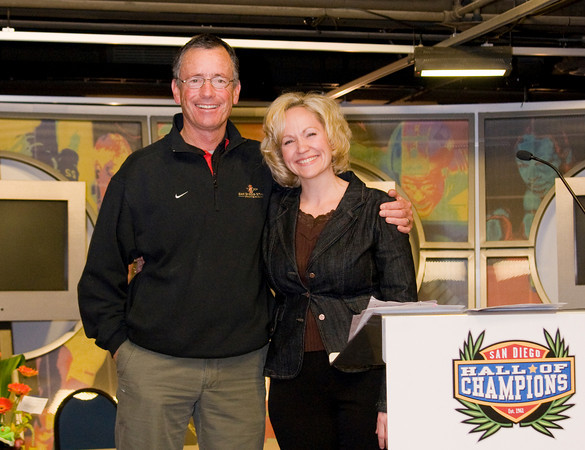 Sipe doesn’t visit Cleveland much. He admitted to the Beacon Journal’s Bob Dyer in a 1988 interview that returning here "brings back all the things that I tried to do as an athlete and was unable to do. I am reminded of failures."
Sipe doesn’t visit Cleveland much. He admitted to the Beacon Journal’s Bob Dyer in a 1988 interview that returning here "brings back all the things that I tried to do as an athlete and was unable to do. I am reminded of failures."
Not unlike Frank Ryan, one of his predecessors as Browns quarterback, Sipe won a lot of games for the local franchise, but will be remembered mostly for one game. The endings of their respective games couldn’t have been more different. One ended in glory, the other in agony.
Still it seems unfair that when we think of Brian Sipe, we too are reminded of failure. Because Brian Sipe electrified this city for two years in a way we’ve rarely, if ever, seen since, and he rates a more positive legacy.
---
Note: This article draws several of its anecdotes, quotations and other details from the original reporting and writing of others, and I feel obliged to acknowledge them here.
Tony Grossi; Tales From the Browns Sideline
Jonathan Knight; Kardiac Kids: The Story of the 1980 Cleveland Browns
Marty Gitlin; Cleveland Browns
Frank M. Henkel; Cleveland Browns History
Bob Dyer; The Top 20 Moments in Cleveland Sports
Terry Pluto; Things I’ve Learned From Watching the Browns
Terry Pluto; When All the World Was Browns Town
---
Other Cleveland #17’s
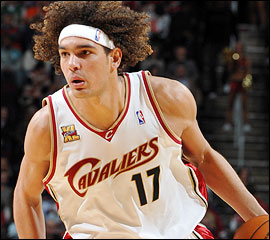 Anderson Varejao - Cavaliers - Forward - (2004-Present)
Anderson Varejao - Cavaliers - Forward - (2004-Present)
Varejao is simply a joy to watch play the game of basketball, with his versatility and all-out effort all the time...something that is reflected in his ongoing popularity with Cavs fans, as well as admiration by NBA fans around the country.
--- Chris Gardocki - Browns - Punter - (1999-2003)
Chris Gardocki - Browns - Punter - (1999-2003)
Anyone who thinks Gardocki was not the Browns MVP from 1999 to 2003 was not paying very close attention to the Browns from 1999 to 2003. Here the former Steeler is immortalized flipping the bird to Bill Cowher. Worth the fine.
---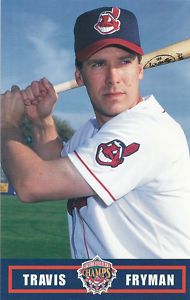
A steady, heady third baseman who had a huge year his first season in Cleveland (.287, 28 HR, 96 RBI, 18th in MVP voting) and continued to pile up good will among Tribe fans for four more seasons after that. A pro’s pro.
--- 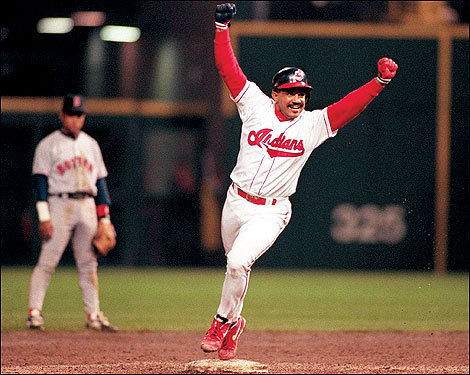 Tony Pena - Indians - Catcher - (1994-1996)
Tony Pena - Indians - Catcher - (1994-1996)
Will forever be remembered for October 3, 1995, when with yours truly in attendance, he homered off Zane Smith on a 3-0 count with two outs in the bottom of the 13th inning to win Game One of the ALDS series with the Red Sox, starting the Tribe on a sweep of the Sox and an eventual trip to the World Series. It was 2:08 a.m. when the ball left the yard, if I recall...so actually, October 4th.
---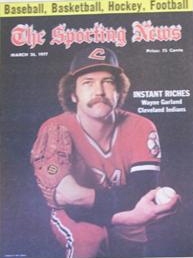 Wayne Garland - Indians - Pitcher - (1977-1981)
Wayne Garland - Indians - Pitcher - (1977-1981)
Garland is notable in Cleveland sports mostly for being the first big name free agent signing by the Indians He came to Cleveland in 1977 for the unheard of sum of $2 million over a 10-year contract (that’s $200,000/year!) after winning 20 games for the Orioles in 1976. He went 13-19 for the Tribe in ‘77, and proceeded to tear his rotator cuff and fade into obscurity. He won a total of 15 more games over the next four seasons with Cleveland, never more than six in any one year. So why is he here again?
---
on Twitter at @dwismar
---
- NBA Announces 2013-2014 Schedule
- Browns Ink Sharknado
- Sharknado A No-Show For Rookie Camp
- Trent Richardson Out Until Training Camp
- Browns Sign Brandon Jackson
- Carrasco Suspended Eight Games
- Browns Add to Wide Receiver Depth with David Nelson
- Browns Need to Learn from Past Draft Mistakes
- Browns Release Chris Gocong and Usama Young
- Browns Missing on Grimes Disappointing, But Not The End
The TCF Forums
- Chris Grant's first 3 drafts
Kingpin74 (Tuesday, January 21 2014 10:13 AM) - The 2014 Offseason Thread
googleeph2 (Tuesday, January 21 2014 9:36 AM) - 2015 Recruiting
furls (Tuesday, January 21 2014 6:57 AM) - Mike Brown
YahooFanChicago (Monday, January 20 2014 11:15 PM) - Movies coming out
HoodooMan (Monday, January 20 2014 9:34 PM) - 2014 Hoops Hockey Hijinx
jpd1224 (Monday, January 20 2014 4:44 PM) - 2014 Recruiting
jclvd_23 (Monday, January 20 2014 2:26 PM) - Wish List - #4 Pick
Hikohadon (Monday, January 20 2014 1:26 PM) - Official- Browns Coach Search/Rumors
OldDawg (Sunday, January 19 2014 6:48 PM) - #1 overall pick Anthony Bennett
TouchEmAllTime (Sunday, January 19 2014 1:28 PM)


